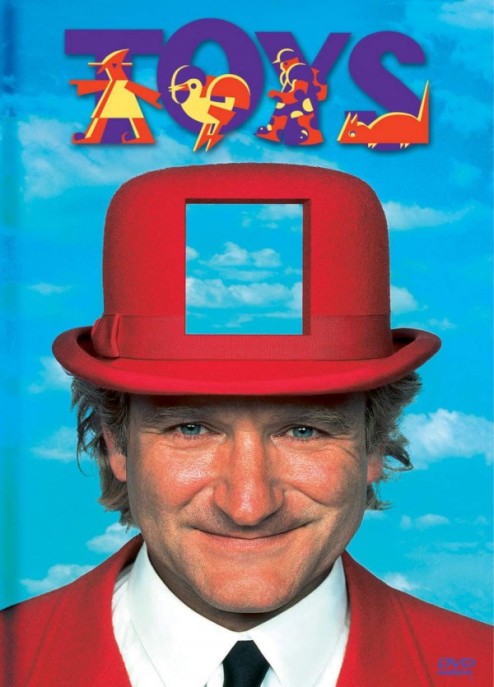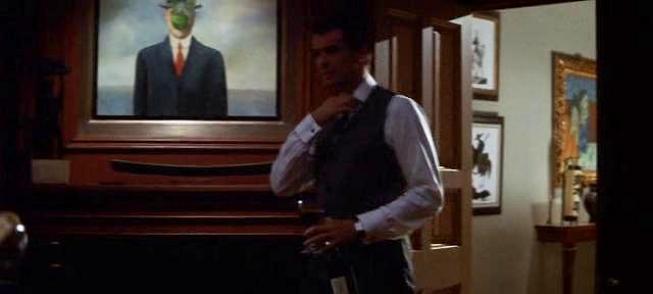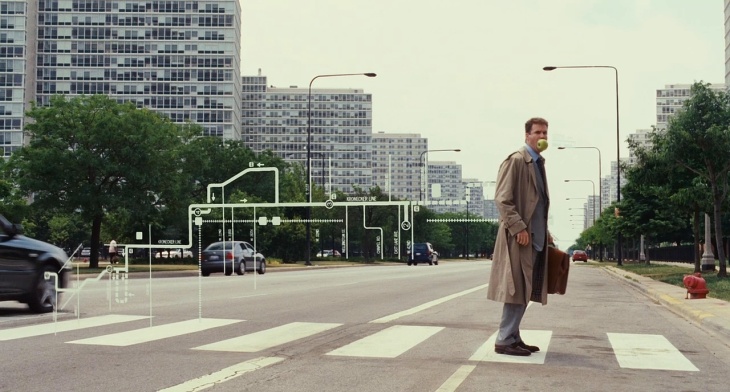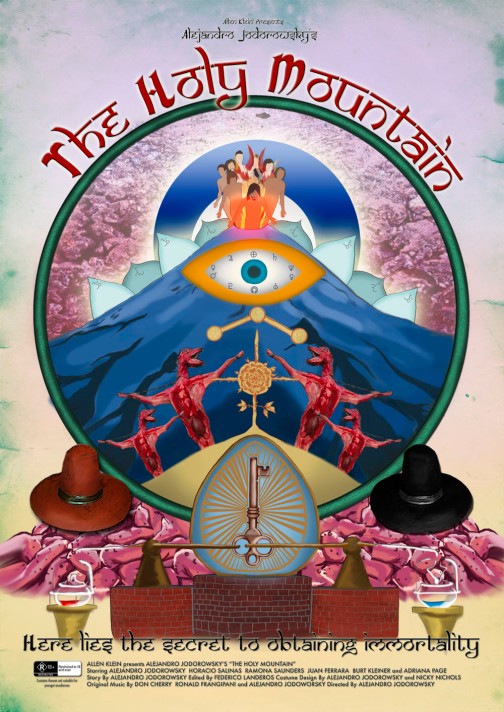The Holy Mountain (Alejandro Jodorowsky, 1973) movie poster
René Magritte‘s The Son of Man appears in Alejandro Jodorowsky’s film The Holy Mountain, on a wall in the house of Jupiter. The film was produced by Beatles manager Allen Klein of ABKCO Music and Records, after Jodorowsky scored an underground phenomenon with El Topo (The Mole) and the acclaim of both John Lennon and George Harrison (Lennon and Yoko Ono put up production money).
 Robin Williams in Toys (Barry Levinson, 1992).
Robin Williams in Toys (Barry Levinson, 1992).
The set design, costumes, and promotional poster reflect the painting’s style.
 A parody of the painting, with Bart behind the floating apple, can be seen briefly at the start of The Simpsons episode No. 86 Treehouse of Horror IV (1993)
A parody of the painting, with Bart behind the floating apple, can be seen briefly at the start of The Simpsons episode No. 86 Treehouse of Horror IV (1993)
The painting appears briefly on the video for Michael Jackson and Janet Jackson’s song Scream , on the “Gallery” section:
 Still from Michael Jackson and Janet Jackson’s Scream music video (Mark Romanek, 1995)
Still from Michael Jackson and Janet Jackson’s Scream music video (Mark Romanek, 1995)
 The Thomas Crown Affair (John McTiernan, 1999)
The Thomas Crown Affair (John McTiernan, 1999)
The Son of Man appears several times in the 1999 version of The Thomas Crown Affair, especially in the final robbery scenes when men wearing bowler hats and trench coats carry briefcases throughout the museum to cover Crown’s movements and confuse the security team.
 Stranger Than Fiction (Marc Forster, 2006)
Stranger Than Fiction (Marc Forster, 2006)
 This is not an Apple, illustration by John Cox, 2007
This is not an Apple, illustration by John Cox, 2007
In the film Mr Magorium’s Wonder Emporium (Zach Helm, 2007), the painting is seen hanging on the wall half finished; at the end of the film Mr Magorium is seen to be painting the rest of it.
This painting also shows up at the end of the film Bronson (Nicolas Winding Refn, 2008). British prisoner Charlie Bronson takes a hostage and turns him into this particular portrait
In the movie 500 Days of Summer (Marc Webb, 2009), the bowler hat and green apple can be seen in Summer’s apartment
 The cover of the book Rubies in the Orchard: How to Uncover the Hidden Gems in Your Business (2009) has a version of the painting, with a pomegranate
The cover of the book Rubies in the Orchard: How to Uncover the Hidden Gems in Your Business (2009) has a version of the painting, with a pomegranate

 In Jimmy Liao’s illustrated book Starry Starry Night (2011), the protagonist girl, with the painting illustrated behind her, imitates the painting to express her protest against her parents’ long term fighting.
In Jimmy Liao’s illustrated book Starry Starry Night (2011), the protagonist girl, with the painting illustrated behind her, imitates the painting to express her protest against her parents’ long term fighting.
In Gary Braunbeck’s novel Keepers (2005), the antagonist figures (the “Keepers” of the title) resemble the nattily-dressed, bowler-hatted figures of Magritte’s painting. Also, in the opening scene of the book, the reference is directly made and explained to this resemblance because of an apple-scented car air freshener printed with the image of the painting hanging in the protagonist’s car.
In Lev Grossman’s 2009 novel The Magicians the antagonist is a man wearing a suit, with his face obscured by a leafed branch suspended in midair.









